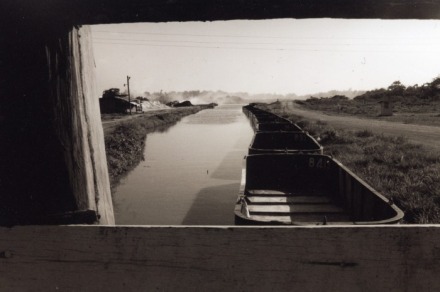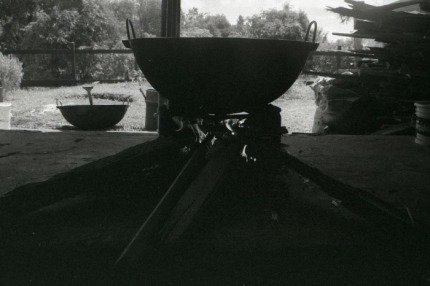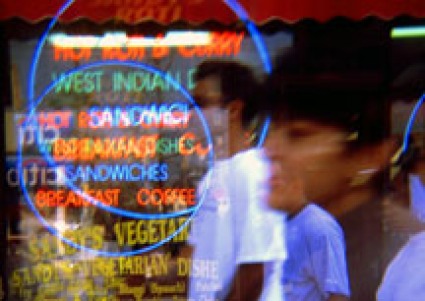History
A Timeline of Indo-Caribbean History in Guyana, Trinidad and the U.S.

1834 (August 1): Emancipation of the slaves in all British colonies. A period of apprenticeship begins (1834-1838) meant, supposedly, to facilitate a gradual transition from slavery to freedom – which provided planters with a few additional years of labor.
1838: Approximately 17,439 slaves gain freedom in Trinidad. Approximately 69, 579 slaves gain freedom in British Guyana. – An exodus of the ex-slaves off the plantations. – A critical shortage of labor - Without cheap labor the plantations would collapse.
1834: Immigration schemes are introduced to Trinidad and Guyana to try to solve the post-emancipation labor shortages in the British West Indies (BWI). Laborers were brought from other parts of the West Indies, Portugal, Europe (Ireland, Scottland, Germany, Sweden, France), Americans from Pennsylvania and Baltimore, China, Manderia, Azores, Malta, West Africa and India.
1838 (May 5): The first ship of Indians aboard the Whitby and Hesperus land in Guyana with 396 Indians, 22 of which are women.
1845: In Trinidad, imported labor from British West Indies, Madeira, and Europe is halted and Indians are brought there for the first time.
1850’s-1900’s: Indians are coerced by Estate Owners into staying in Guyana through the exchange of their return passage to India after their 5 year contracts have expired, for a plot of land and a cow. Most oblige, although some do return back.
1880s: Indians in Trinidad petition for the legal recognition of Hindu and Muslim marriages.
1884 (October 30): The Jahaajee Massacre/ Hosay Riots of colonial Trinidad. This event has been described as the largest, single loss of life in any uprising of oppressed peoples in Trinidad since the virtual elimination of the native peoples, even taking into account the days of slavery and post-slavery. Official records show that during the Hosea Riots (in recent years referred to as the Jahaajee Massacre of 1884) twenty-two Indians were martyred – killed – and around one hundred and twenty more injured by British colonial authorities. How many more died subsequently, because of the injuries, remains unknown.
1890: In Guyana, imported labor from BWI, Madeira, Europe and China is halted.
1914-1918: World War I.
1917: The Indentureship System ends in the Caribbean (Guyana, Trinidad and Jamaica).

1923: Indo-Guyanese cultural and political icon, Rajkumari Singh is born.
1925: Adrian Cola Rienzi (Krishna Deonarine), at 20, is elected as the first president of the Southern Section of the Trinidad Workingmen’s Association (an association that is a pressure group for political reform and also a watchdog for the rights of the workers; formed in 1897 to represent skilled black urban workers).
1930s: Economic hardships arising out of global depression fuel discontent and disturbances in British West Indian colonies.
1934: Rienzi returns to Trinidad from England trained as a lawyer and takes up the fight for the laboring classes. Trinidad Workingman’s Association (TWA) renamed the Trinidad Labor Party. Sugar workers stage protests and hunger march from Caroni to Port of Spain.
1935-1938: Sugar workers repeatedly protest their life and work in British Guyana’s sugar plantations.
Muslim marriages legally recognized in Trinidad.
The Indian government in India adopts new polices against the return of Indians from the Caribbean after their contracts are over because of the adjustment problems of them returning.
1938-1939: The British Colonial Office dispatches a study team, the Moyne Commission, to investigate conditions in the colonies. The commission’s report, withheld until after World War II, documents the deep poverty in the British West Indies – lack of educational and employment opportunities.
1939: In a protest for higher wages and lighter tasks for pregnant women, three workers are shot dead at the Leonora Estate in Guyana. Of the three people murdered was weeder Sumintra, becoming a symbol of the struggle for justice for Indian women on the estates.
1941-1945: World War II. Boom in Trinidad’s oil industry. Establishment of US bases in Trinidad create heightened expectation among working class.
Hindu marriages legally recognized in Trinidad (1945).
1947: India gains Independence.
1949: The steamship, Orna carries 311 Indians back to India after their contracts are over. (The last ship to leave Guyana to take Indians back to India was in 1955).
1950: The People’s Progressive Party is formed. Cheddi Jagan becomes the leader and L.F.S Burnham becomes the chairman. With the rise of the PPP in Guyana, both Afro-Guyanese and Indo-Guyanese believe the party will bring about national unity.
1953: PPP wins 51 % of the votes (18 out of 22 seats in the House of Assembly) in the April general elections. After only 133 days in office, in October, British troops throw the PPP out of office, the constitution is suspended and some of the PPP’s leaders are imprisoned.
1955: Split in the People’s Progressive Party (PPP) leading to one faction headed by Cheddi Jagan and the other faction, now called the People’s National Congress (PNC) headed by Forbes Burnham.
1956: Eric Williams forms the People’s National Movement (PNM) in Trinidad. When this political party wins the national elections he becomes Chief Minister of Trinidad and Tobago from 1956 to 1959, Premier from 1959 to 1962, and, upon the granting of Independence to Trinidad and Tobago by Britain in 1962, Prime Minister from 1962 to 1981.
1961: The election in Guyana leads to intense racial conflicts. With the Cold War (1945-1991) being waged between superpowers, U.S. and Russia, and the U.S.’s growing fear of Communism, the Kennedy administration uses the Central Intelligence Agency (CIA) to instigate strikes and riots in Guyana, leading to violent outbreaks between Afro-Guyanese and Indo-Guyanese.
1962: Trinidad gains Independence.
1963: In March, the Labor Relations Bill is introduced by the British colonial government and the Trades Union Council calls a strike which lasts 80 days. This leads to the worst outbreak of racial violence in Guyana’s history. Victims are mainly Indian and anyone who is in support of the government. Indian businesses and homes are looted and burnt and Indian women are raped.
1964: Kowsilia, a fighter for women’s labor rights on the estates is mowed down by a tractor, becoming a martyr for the Guyanese working people movement. A PNC-UF coalition forms the government lead by Forbes Burnham.

1960’s-1980’s: There is a large migration of Indo-Guyanese people to the United States and Canada in light of the political upheavals and corruption of the PNC government.
1966 (May 26): Guyana gains Independence.
1990: With the establishment of a growing and thriving Indo-Caribbean community in the South Ozone Park and Richmond Hill area of queens, the first annual Pagwah Parade takes place on Liberty Avenue and in Smokey Park.
1992: In October, the PNC is voted out of office by the PPP in the first free and fair elections since independence. By this time, it is estimated that Guyana has lost one third of its population with people of Indian and African descent migrating to the United States, Canada, Suriname and other Caribbean islands.
1996-1997: The Rajkumari Center for Indo-Caribbean Arts and Culture established in New York City to preserve and present Indo-Caribbean arts and culture in the United States.
Photography by Manauvaskar Kublall (www.mediasutra.net)

